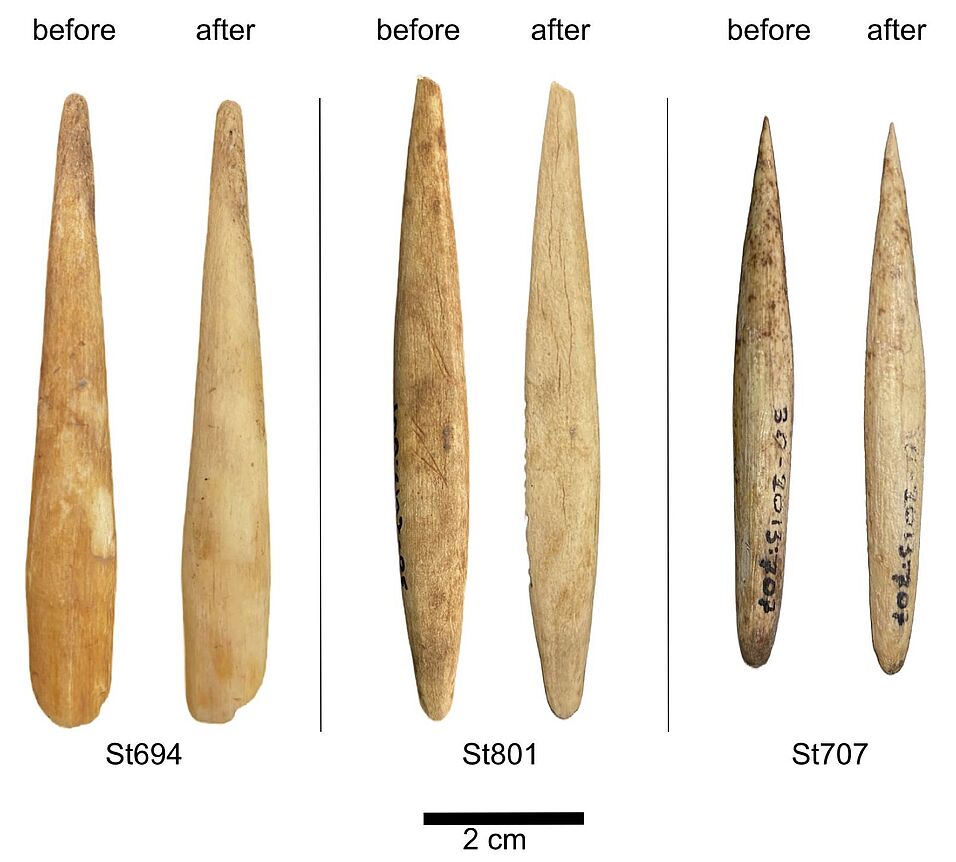Internal and external bony tissues from diverse mammalian taxa are one of the primary animal raw materials exploited for technical and symbolic purposes by Eurasian Upper Palaeolithic hunter-gatherers. Identifying the source species used for osseous raw material is critical to gain insights into these populations’ behaviour, technology, and subsistence. The study of osseous tools has advanced in the last few years by combining archaeological and biomolecular methods. Ancient genomics opens many new analytical opportunities. Ancient DNA (aDNA) can provide a wealth of information about the animal sources of these objects. Unfortunately, aDNA analyses often involve destructive sampling. Here, we develop and apply a minimally-invasive aDNA sampling method for an assemblage of 42 prehistoric hunting weapons and tools from various Eurasian archaeological sites. We evaluated the impact of our approach on the specimens visually, microscopically and through Micro-CT scans. The surface impacts are marginal, ranging from 0.3-0.4 mm. Using a custom-made DNA capture kit for 54 mammalian species, we obtained sufficient aDNA to identify the taxa of 33% of the objects. For one of the tools, we recovered enough endogenous aDNA to infer the genetic affinities of the individual. Our results also demonstrate that ancient antler, one of the primary raw materials used during a large part of prehistory, is a reliable source of aDNA. Our minimally-invasive aDNA sampling method is therefore effective while preserving osseous objects for potential further analyses: morphometric, technical, genetic, radiometric and more.
Tejero, J.-M., Cheronet, O., Gelabert, P., Zagorc, B., Alvarez, E., Averbouh, A., Bar-Oz, G., Belfer-Cohen, A., Bosch, M. D., Brück, F., Cueto, M., Dockner, M., Fullola, J. M., Gárate, D., Giannakoulis, M., González, C., Jakeli, N., Mangado, X., Meshveliani, T., Neruda, P., Nigst, P. R., Šimková, P. G., Tapia, J., de la Torre, M. S., Schwab, C., Weber, G., & Pinhasi, R. (2023). A minimally-invasive method for ancient DNA sampling of Prehistoric bone and antler tools and hunting weapons. bioRxiv. 10.1101/2023.04.02.535282

